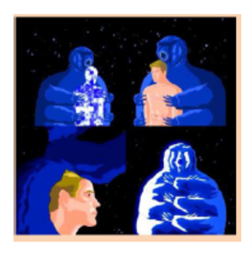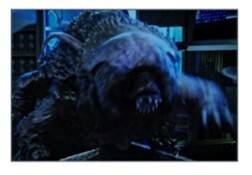Here is a great article on the litigation against CBS.
Star Trek’s Space-Traveling Tardigrades Live Long and Prosper After Second Circuit Affirms Non-Infringement of Video Game Copyright
November 12, 2020
Edited by Margaret A. Esquenet
Tardigrades—microscopic creatures that can survive in outer space—played an important role in a recent copyright infringement suit involving the most recent incarnation of the famous Star Trek franchise. Plaintiff Anas Abdin alleged that the CBS Broadcasting Inc.’s show, Star Trek: Discovery, copied elements of his science fiction video game, Tardigrades. Specifically, Abdin alleged that the defendants copied the tardigrade and the plot, mood, characters, and overall feel from his video game. The Second Circuit concluded, however, that Abdin failed to plausibly allege that his video game and Discovery were substantially similar, and the court affirmed the dismissal of the suit.
Abdin’s Tardigrades video game is an interactive adventure game set in the year 20,000 B.C., in which several characters use technology to explore space travel and other planets. A giant blue tardigrade is an important character in the video game, which also includes themes of adventure, romance, slavery, secrecy, and espionage. Between 2014 and 2017, Abdin posted designs, video trailers, and descriptions of a science fiction script on various online platforms and forums. In 2018, he obtained a copyright registration for the distillation of the video game concept, which was a compilation of images, descriptions, and illustrations of the video game and its characters.

Tardigrade from Abdin’s video game
Star Trek: Discovery premiered on television in 2017 and featured a giant tardigrade called “Ripper” in three episodes of the first season. The crew discovers that Ripper’s connections to the mycelial spore network can be used to jump the ship across the galaxy.

“Ripper” the Tardigrade from Star Trek: Discovery
Assuming that copying had occurred for the purposes of its analysis, the Second Circuit focused on the second element of a claim for copyright infringement: whether the accused work copied “constituent elements of the work that are original.” Under the second element, a plaintiff must demonstrate that actual copying occurred and that the copying is illegal because “a substantial similarity exists between the defendant’s work and the protectible elements” of the plaintiff’s work. The court noted that where a work incorporates unprotectible elements from the public domain, as Abdin’s video game did, the court applies the “more discerning” observer test, which requires substantial similarity between only the protectable elements of the allegedly infringed work.
First, the court reiterated that neither facts nor ideas are copyrightable. The district court had properly taken judicial notice of numerous scientific studies regarding tardigrades’ ability to survive in space. Both courts determined that the idea that tardigrades could travel in space was just that: an idea, which is not copyrightable. That is, Abdin’s space-traveling tardigrade was a generalized expression of the scientific fact that tardigrades can survive in space, and, therefore, it was an unprotectable idea that could not be withdrawn from the public domain. The Second Circuit also considered the tardigrades’ different roles in their respective works. While the tardigrade in Abdin’s video game was nameless and had an unclear role in the story, Ripper the tardigrade played a central role in three episodes of Discovery’s first season. The parties’ respective tardigrades’ space travel abilities were also markedly different—the tardigrade in Abdin’s video game enveloped humans and carried them through space, while Ripper was used as a supercomputer to help the ship jump to different parts of the universe.
Next, the court concluded that the space travel and alien encounters in Abdin’s video game were unprotectable “stock elements” of the science fiction genre; that is, they were scènes à faire that were standard, if not indispensable, to the genre. Similarly, a tardigrade able to travel in space (or facilitate travel for others) was an unprotectable element, as it was a “natural extension of the tardigrades’ known ability to survive in space.” Therefore, many of the similarities that Abdin alleged existed between his video game and Discovery were based on unprotectable elements.
The court then considered whether any similarities between Abdin’s characters and Discovery’s characters could support a copyright infringement claim. Some characters in both works shared “generalized” similarities, such as profession and hair color. For example, both works had a blond male scientist, as well as female characters with dark curly hair. But the Second Circuit agreed with the district court that these generalized traits were not protectable, and thus could not form the basis for a character infringement claim. Plus, the characters in Discovery differed in significant ways from their alleged counterparts in Abdin’s video game. As the court noted, the blond scientist in Discovery is not just a scientist—he is an “astromycologist” who is an expert in space-based fungi. And, while the dark-haired female character in Abdin’s video game was a communications engineer, the allegedly similar character in Discovery is the star of the show, who began the show as a First Officer, was convicted of mutiny, and then became a science officer. Consequently, the Second Circuit determined that it would be “highly illogical” to find character infringement, given the many differences between the works’ characters.
Finally, the court concluded that the “total concept and feel” of Discovery is different than the total concept and feel of Abdin’s video game, which precluded a finding of copyright infringement. While Abdin’s video game involved vignettes from 20,000 B.C., Discovery is built upon decades of Star Trek storylines, all set in the distant future. And, Abdin’s video game allowed players to complete puzzles in a “choose your own adventure” style, whereas Discovery features fully developed storylines with characters and familiar themes from the Star Trek universe.
Having eliminated the unprotectable elements from Abdin’s video game (i.e., the scientific facts, general ideas, common science fiction themes, and general character traits), the court concluded that Abdin had failed to allege substantial similarity between the protectable elements in his video game and Discovery. Finding Abdin’s resistance futile, the court affirmed the dismissal of his complaint for failure to state a claim.
The case is Abdin v. CBS Broad. Inc., No. 19-3160-CV, 2020 WL 4743018 (2d Cir. Aug. 17, 2020).
Related Practices
Related Industries
Contacts
Jessica L. Hannah Associate Washington, D.C. +1 202 408 4319 Email Margaret A. Esquenet Partner Washington, D.C. +1 202 408 4007 Email
This article was re-posted from: https://www.finnegan.com/en/insights/blogs/incontestable/star-treks-space-traveling-tardigrades-live-long-and-prosper-after-second-circuit-affirms-non-infringement-of-videogame-copyright.html?utm_source=Mondaq&utm_medium=syndication&utm_campaign=LinkedIn-